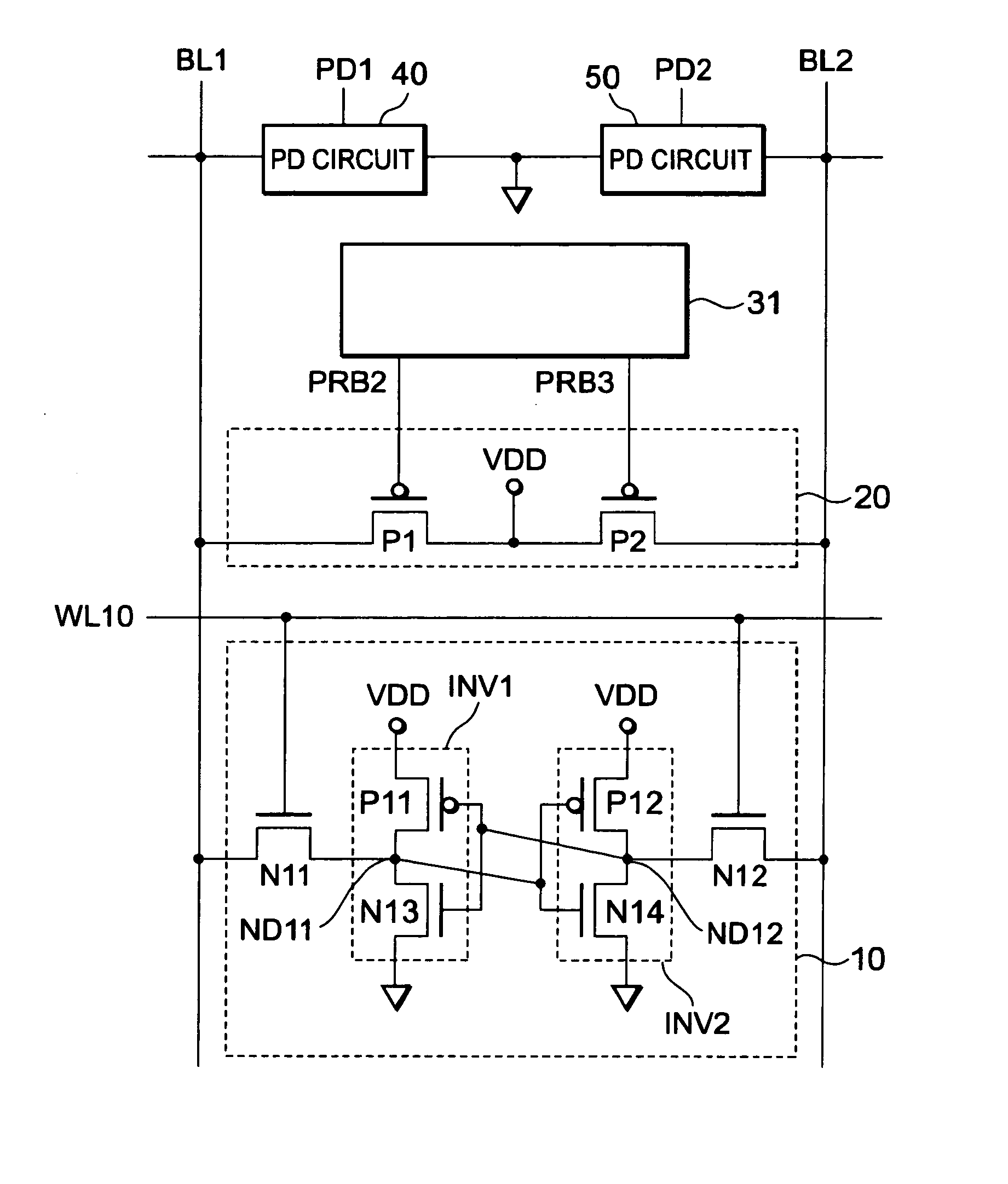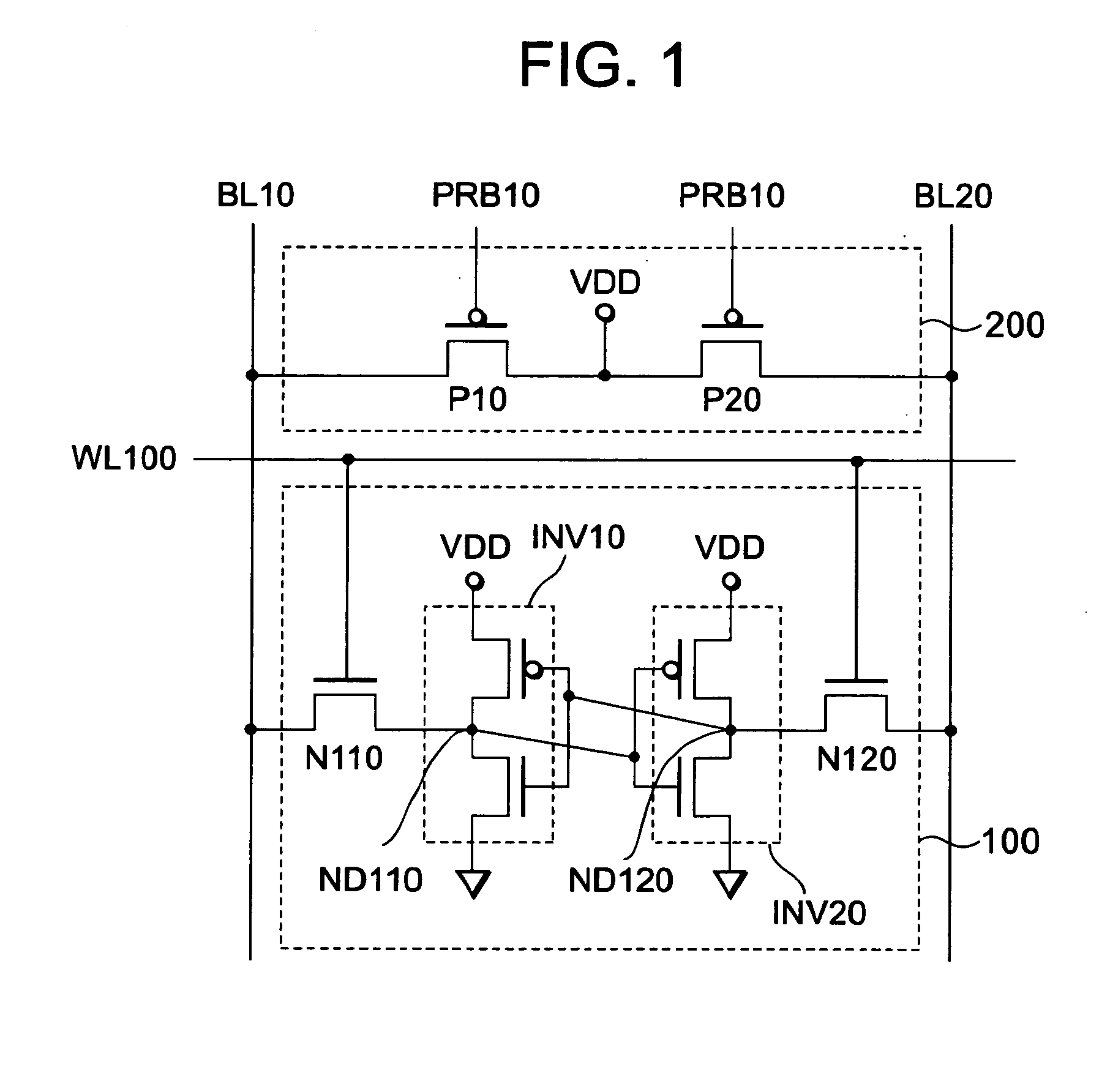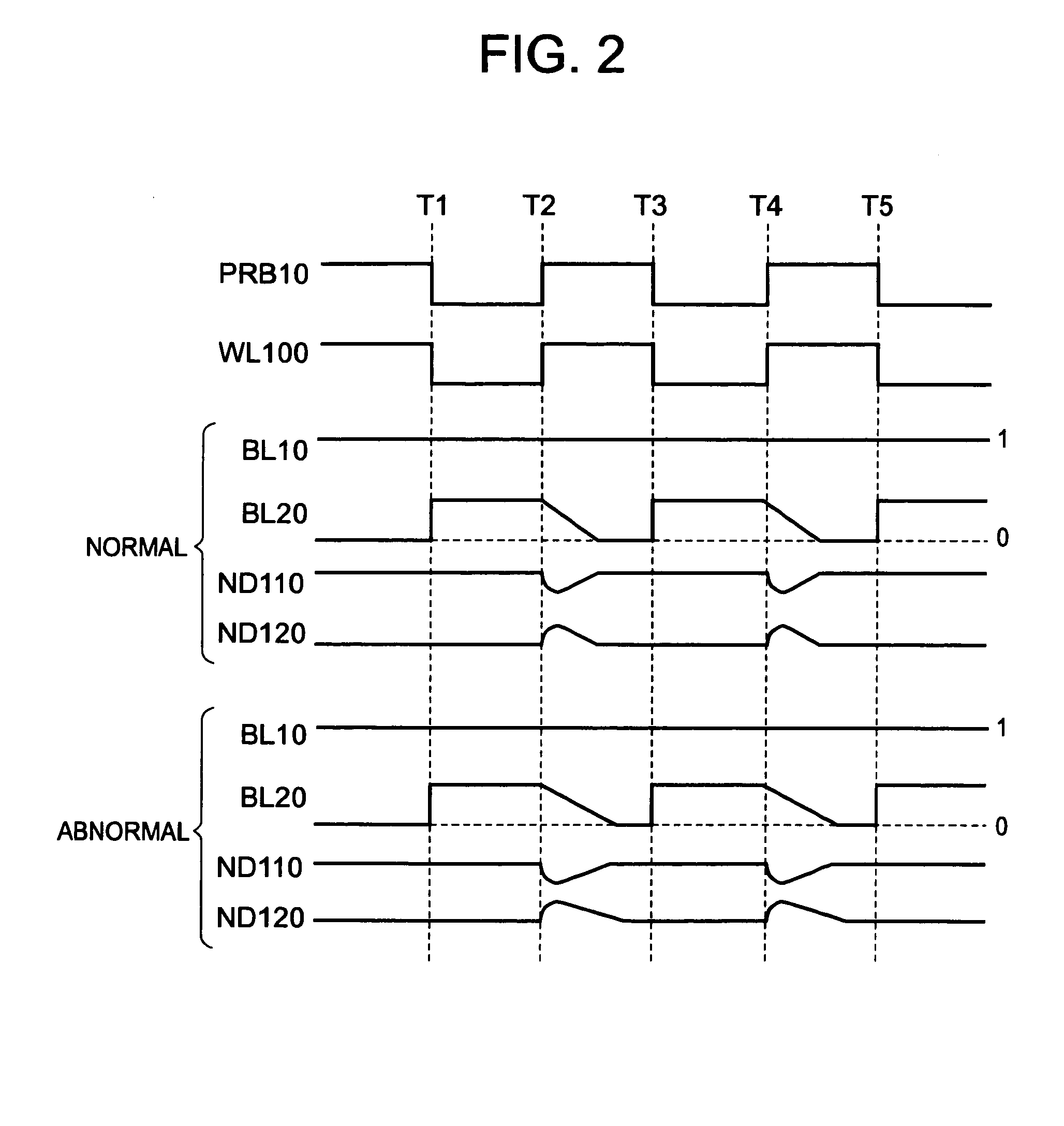Static random access memory (SRAM) and test method of the SRAM having precharge circuit to precharge bit line
a random access memory and test method technology, applied in static storage, information storage, digital storage, etc., can solve the problems of abnormality of memory cells, small static noise margin of memory cells, and high fraction defective, so as to improve the detection sensitivity of abnormal memory cells, and control the increase in the circuit area of sram
- Summary
- Abstract
- Description
- Claims
- Application Information
AI Technical Summary
Benefits of technology
Problems solved by technology
Method used
Image
Examples
first exemplary embodiment
1. First Exemplary Embodiment
[0040]A first exemplary embodiment of SRAM and a read test method of the SRAM according to the present invention will be described with reference to FIG. 5 and FIG. 6.
(Configuration of SRAM)
[0041]FIG. 5 is a diagram showing a part of a configuration of the SRAM in the first exemplary embodiment. The SRAM includes a memory cell 10 connected to the bit line pair BL1, BL2 and the word line WL10, a precharge circuit 20 for precharging the bit line pair BL1, BL2, and a precharge control circuit 30 for controlling the precharge circuit 20. The precharge control circuit 30 also controls the precharge circuit connected to an other bit line pair being not illustrated.
[0042]Referring to FIG. 5, the memory cell 10 include a positive feedback loop (a flip-flop) that includes two CMOS inverters INV1, INV2 and, two N-channel MOS transistors N11, N12 (hereinafter referred to as selection transistors N11, N12) for controlling a connection between the bit line pair BL1, ...
second exemplary embodiment
2. Second Exemplary Embodiment
[0060]FIG. 7 is a diagram showing a part of a configuration of the SRAM in a second exemplary embodiment. In the SRAM in the first exemplary embodiment, at the time of the test mode, the precharge circuit 20 is controlled by the precharge control signal PB1 whose signal level changes at the same timing. Thereby, the bit line pair BL1, BL2 was biased with the power supply voltage VDD, and the data of the abnormal memory cell was forcibly inverted. On the other hand, in the SRAM in the second exemplary embodiment, at the time of the test mode, the precharge transistors P1, P2 are controlled by the respective precharge control signals PB2, PB3 whose signal levels change at different timings.
(Configuration of SRAM)
[0061]Referring to FIG. 7, the SRAM in the second exemplary embodiment includes a precharge control circuit 31 instead of the precharge control circuit 30 in the first exemplary embodiment. In the case of the test mode, the precharge control circu...
third exemplary embodiment
3. Third Exemplary Embodiment
[0069]FIG. 9 is a diagram showing a part of a configuration of the SRAM in a third exemplary embodiment. In the SRAM in the first exemplary embodiment, at the time of the test mode, the precharge circuit 20 is controlled by the precharge control signal PB1 whose signal level changes at the same timing. Thereby, the bit line pair BL1, BL2 was biased with the power supply voltage VDD, and the data of the abnormal memory cell was forcibly inverted. On the other hand, in the SRAM in the third exemplary embodiment, at the time of the test mode, the precharge transistors P1, P2 are controlled by the respective precharge control signals PB4, PB5 whose signal levels change at different timings. Moreover, by decreasing the voltage of one of the node pair using the data that is written in an other memory cell connected to the same bit line pair, the SRAM can be made to be SRAM that has further higher detection sensitivity of the abnormality.
(Configuration of SRAM)...
PUM
 Login to View More
Login to View More Abstract
Description
Claims
Application Information
 Login to View More
Login to View More - R&D
- Intellectual Property
- Life Sciences
- Materials
- Tech Scout
- Unparalleled Data Quality
- Higher Quality Content
- 60% Fewer Hallucinations
Browse by: Latest US Patents, China's latest patents, Technical Efficacy Thesaurus, Application Domain, Technology Topic, Popular Technical Reports.
© 2025 PatSnap. All rights reserved.Legal|Privacy policy|Modern Slavery Act Transparency Statement|Sitemap|About US| Contact US: help@patsnap.com



